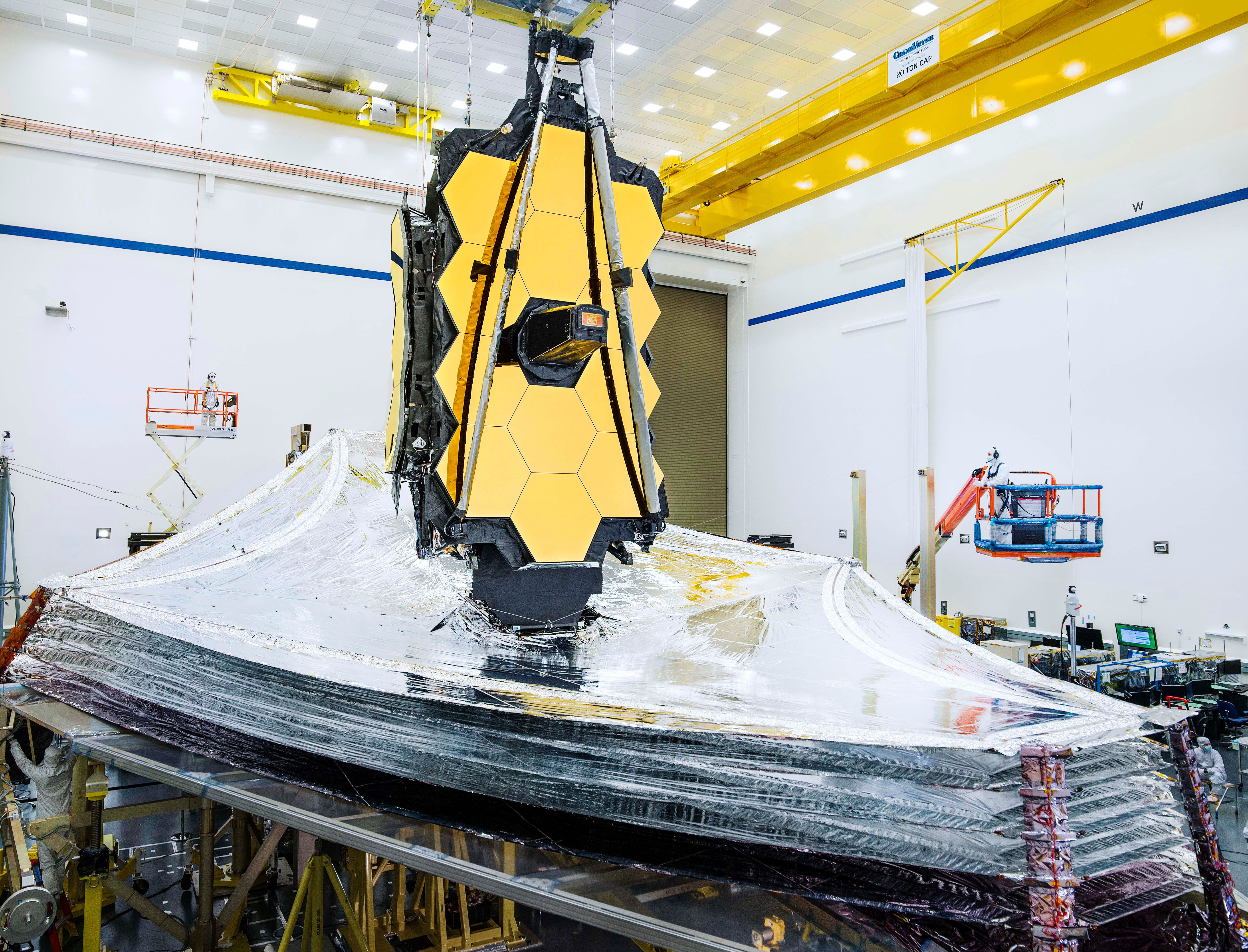NASA's James Webb Space Telescope Passes Vital Sun Shield Test

NASA's James Webb Space Telescope has reached a major milestone with a successful test of the spacecraft's sun shield.
Engineers fully deployed and tensioned each of the five layers of the sun shield, which will protect the telescope from the sun's powerful radiation and, in turn, help regulate the temperature of Webb's optics and sensors. As part of the test, the sun shield was extended to the same position it will be in when it is 1 million miles from Earth, according to a statement from NASA.
"This was the first time that the sun shield has been deployed and tensioned by the spacecraft electronics and with the telescope present above it," James Cooper, NASA's Webb Telescope sun shield manager at NASA's Goddard Space Flight Center in Maryland, said in the statement. "The deployment is visually stunning as a result, and it was challenging to accomplish."
Related: Building the James Webb Space Telescope (Gallery)
The James Webb telescope is expected to launch in March 2021. The tennis court-size sun shield consists of five layers that are each coated in a vapor-deposited aluminum substance to reflect the sun's heat into space, according to the statement.
Testing the sun shield's deployment helps ensure that it will function successfully once in orbit. In order to simulate the lack of gravity that the spacecraft will experience, NASA technicians used gravity-offsetting pulleys and weights.
"This test showed that the sunshield system survived spacecraft element environmental testing, and taught us about the interfaces and interactions between the telescope and sunshield parts of the observatory," Cooper said in the statement. "Many thanks to all the engineers and technicians for their perseverance, focus and countless hours of effort to achieve this milestone."
Get the Space.com Newsletter
Breaking space news, the latest updates on rocket launches, skywatching events and more!
When deployed, the sun shield separates the space observatory into a warm side that always faces the sun and a cold side that always faces deep space. Following the successful deployment, NASA team members will start folding the sun shield back into its stowed position, according to the statement.
Next, the spacecraft will undergo electrical and mechanical tests to simulate the vibration environment it will endure during launch. Then, the telescope has just one final deployment and stowing cycle before it launches to space.
- How the James Webb Space Telescope Works (Infographic)
- Cosmic Eye Candy! James Webb Space Telescope Halloween Costume Is a Real Treat (Photos)
- James Webb's Eye in the Sky Aids Human Eyes with LASIK Tech
Follow Samantha Mathewson @Sam_Ashley13. Follow us on Twitter @Spacedotcom and on Facebook.
Join our Space Forums to keep talking space on the latest missions, night sky and more! And if you have a news tip, correction or comment, let us know at: community@space.com.

Samantha Mathewson joined Space.com as an intern in the summer of 2016. She received a B.A. in Journalism and Environmental Science at the University of New Haven, in Connecticut. Previously, her work has been published in Nature World News. When not writing or reading about science, Samantha enjoys traveling to new places and taking photos! You can follow her on Twitter @Sam_Ashley13.









